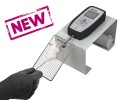Authors
Z Pu, X Bao, S Xia et al
Lab
Nanjing University, Nanjing, Jiangsu, PeopleÕs Republic of China
Journal
Journal of Inflammation Research
Abstract
Introduction: Peripheral neutrophil infiltration can exacerbate ischemiaÐreperfusion injury. We focused on the relationship between various peripheral immune cells and cerebral ischemiaÐreperfusion (I/R) injury.
Methods: In this study, we investigated the effects of dauricine on neuronal injury induced by ischemiaÐreperfusion and peripheral immune cells after ischemic stroke in mouse model, and we explored the undefined mechanisms of regulating peripheral immune cells through RNA sequencing and various biochemical verification in vitro and in vivo.
Results: We found that dauricine improved the neurological deficits of I/R injury, reduced the infarct volume, and improved the neurological scores. Furthermore, dauricine reduced the infiltration of neutrophils into the brain after MCAO-R and increased peripheral neutrophils but unchanged the permeability of the endotheliocyte Transwell system in an in vitro blood-brain barrier (BBB) model. RNA sequencing showed that chemotaxis factors, such as CXCL3, CXCL11, CCL20, CCL22, IL12a, IL23a, and serpine1, might play a crucial role. Overexpression of serpine1 reversed LPS-induced migration of neutrophils. Dauricine can directly bind with serpine1 in ligandÐreceptor docking performed with the Autodock and analyzed with PyMOL.
Conclusion: We identified chemotaxis factor serpine1 played a crucial role in peripheral neutrophil infiltration, which may contribute to reduce the neuronal injury induced by ischemiaÐreperfusion. These findings reveal that serpine1 may act as a potential treatment target in the acute stage of ischemic stroke.
BIOSEB Instruments Used:
Grip strength test (BIO-GS3)

 Pain - Thermal Allodynia / Hyperalgesia
Pain - Thermal Allodynia / Hyperalgesia Pain - Spontaneous Pain - Postural Deficit
Pain - Spontaneous Pain - Postural Deficit Pain - Mechanical Allodynia / Hyperalgesia
Pain - Mechanical Allodynia / Hyperalgesia Learning/Memory - Attention - Addiction
Learning/Memory - Attention - Addiction Physiology & Respiratory Research
Physiology & Respiratory Research
 Pain
Pain Central Nervous System (CNS)
Central Nervous System (CNS) Neurodegeneration
Neurodegeneration Sensory system
Sensory system Motor control
Motor control Mood Disorders
Mood Disorders Other disorders
Other disorders Muscular system
Muscular system Joints
Joints Metabolism
Metabolism Cross-disciplinary subjects
Cross-disciplinary subjects Preclinical studies and opioids: role in crisis management in the United States
Preclinical studies and opioids: role in crisis management in the United States 